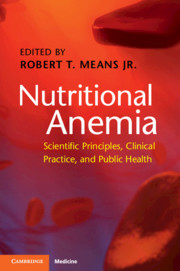Section 2 - Iron Deficiency
Published online by Cambridge University Press: 02 April 2019
- Type
- Chapter
- Information
- Nutritional AnemiaScientific Principles, Clinical Practice, and Public Health, pp. 51 - 102Publisher: Cambridge University PressPrint publication year: 2019

